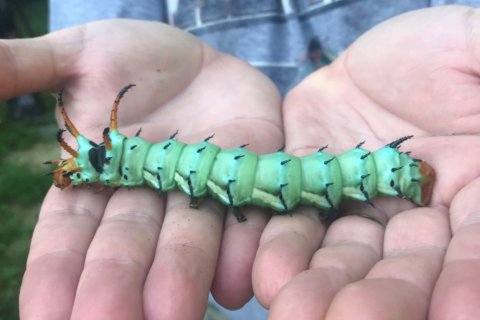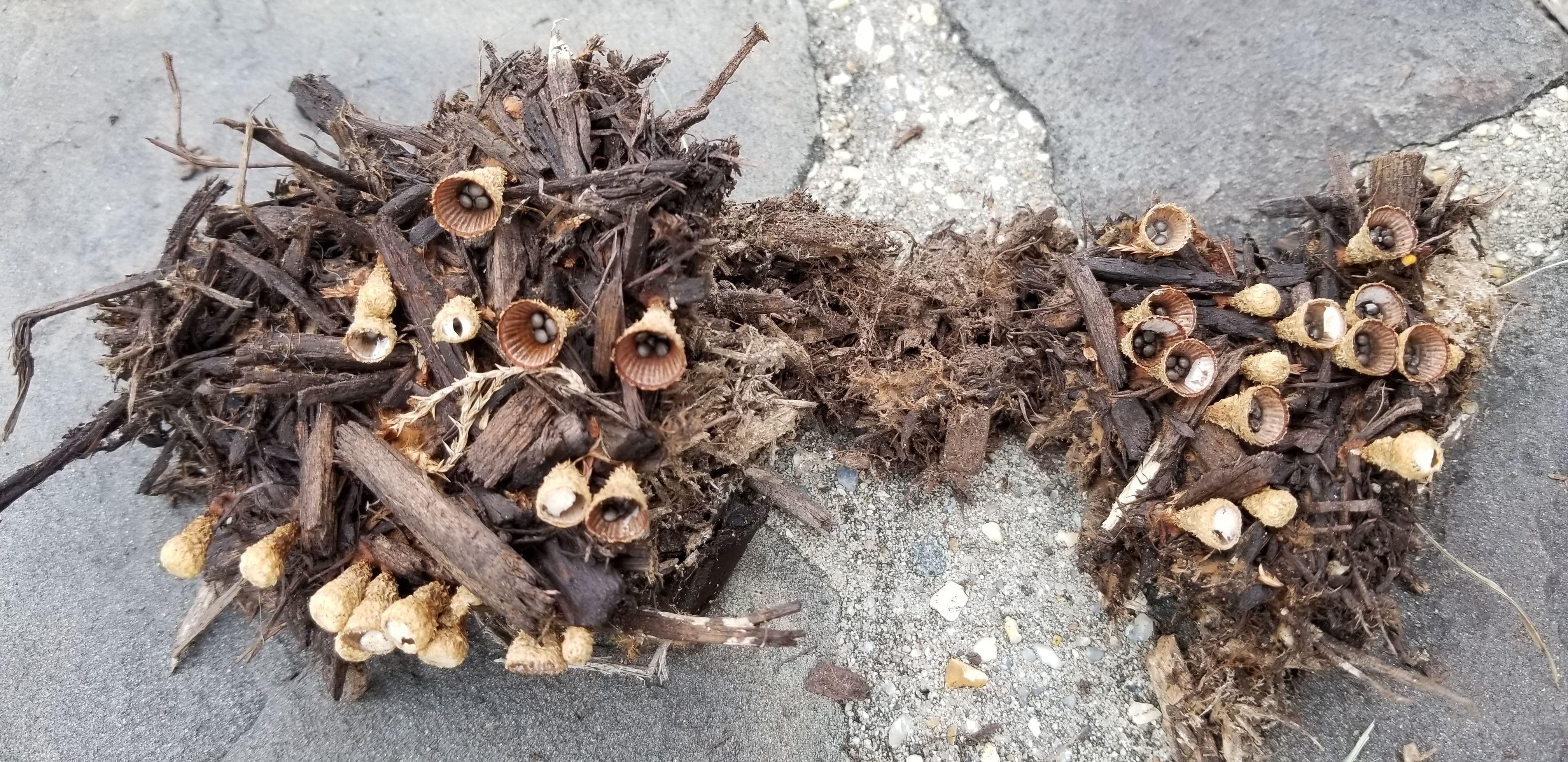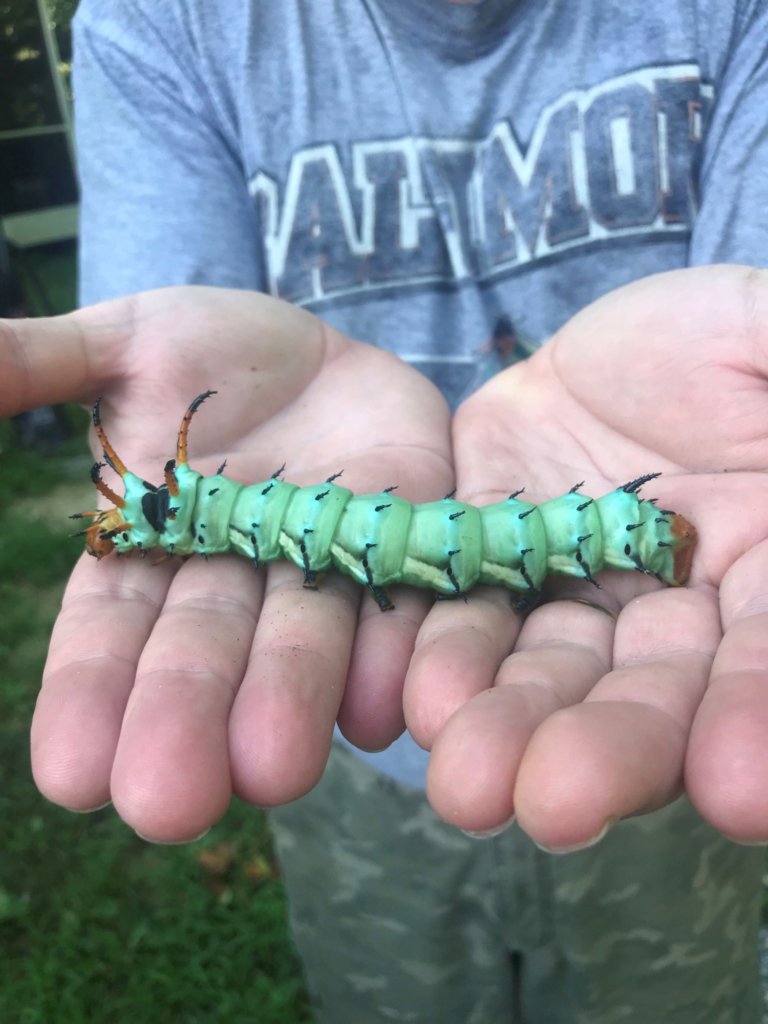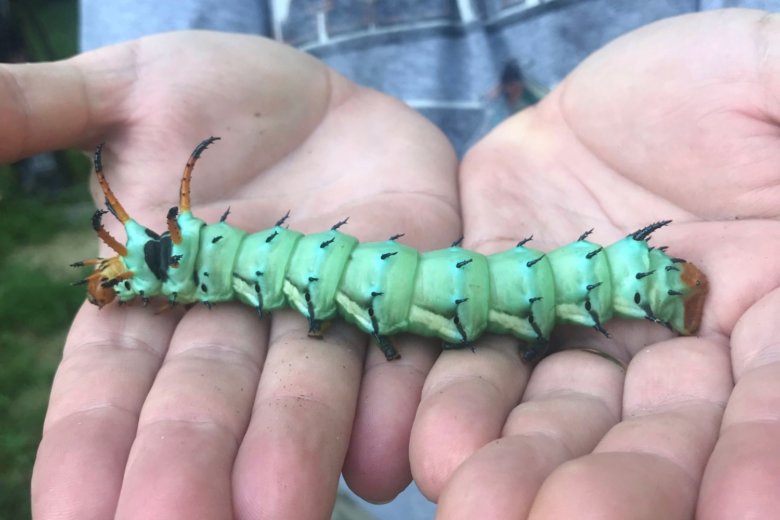
No birds in these nests

Joe in Derwood, Maryland, sent a cool-looking photo and writes: “Can you please tell me what these cone shaped items are?”
“Bird’s nest fungus,” Joe. Think what a riot of bird’s nests would look like in a fairy garden, complete with little “eggs” inside.
Bird’s nest is one of many types of nuisance fungus that appear in trash wood mulch, especially in a wet year.
Although it looks quite a bit like the extremely nasty artillery fungus, the spores that bird’s nest shoots out are easily cleaned off cars and siding. The tar-like spores of actual artillery fungus are difficult to impossible to remove.
Never use trashy wood mulch within 30 feet of a light-colored home or car. Or really, at all. Wood mulch is 100% scam.
Basil blight
Howard in Arlington, Virginia, writes: “Most of my garden has done exceptionally well this season except for my basil, which is looking quite sick. Leaves are turning brown, and I’m afraid I’ll lose all the plants. Any suggestions?”
Yes, Howard. Cut your losses and trash those plants; they have fallen prey to a basil blight pathogen that has been ruining people’s pesto plans for several years now.
The good news is that the pathogen — a type of downy mildew — only affects large-leaf sweet Italian basil. The bad news is that large-leaf sweet Italian basil accounts for most of the basil grown by backyard gardeners.
The certain way to achieve a basil harvest this season is to buy seeds or plants of any of the other basils. There are hundreds of different varieties out there, many of which produce the same distinctive flavor.
Indoor-outdoor plants beat the basil blight
I’m surprised that I haven’t received many more emails like the recent one from Howard. Researchers from Cornell University have been tracking a “basil blight” for several seasons now; and when this extremely tough pathogen strikes, it wipes out the large leaf sweet Italian basil most of us grow.
Other basils are immune, but Cornell University researcher Meg McGrath (no relation; at least that we know of) has long felt that humidity was the issue here and has taken to growing her large-leaf sweet Italian basil in easy-to-move containers for several years now.
She brings the containers inside when the weather is really humid and takes them back outside when it is sunny and dry. The basil she has planted in the ground falls prey to the fungus but her traveling containers are doing fine.
Not your everyday devil caterpillar
Mike in Brandywine, Maryland, not only sent in what is certain to be the Garden Plot picture of the year, but made me realize that I made a mistake when I recently called the dreaded tomato hornworm “the largest caterpillar in North America.”
Mike writes: “I’m attaching a picture of a hickory horned caterpillar I found. Stunning-looking caterpillar. It’s the first I’ve ever spotted, and I’m curious if they can be a nuisance to an organic gardener.”
“Stunning” is putting it mildly, Mike. The hickory horned devil is a huge creature with scary-looking spines up and down its body. Researchers explain that it “can grow to the size of a large hot dog.”
Luckily, the spines are harmless (in general, do not touch spiny caterpillars; some can deliver a sharp sting), and this caterpillar feeds only on the leaves of nut trees, such as hickory and pecan. It’s not considered a pest, but it is a rarity here. It is much more common down South.

Evil squirrels vs. love apples
Mike in Ashburn, Virginia, knew that the subject line “Servants of Satan are eating my tomatoes” would get my attention.
He writes: “Behind my house are a lot of trees, so I have a beautiful view. Problem is, I also have a lot of furry tailed tree rats who munch on the tomatoes I’m growing on my deck. Any advice on how to combat these critters?”
Evil squirrels are smart, athletic, merciless and have a lot of time on their hands to torment gardeners.
Mike, one solution is to make loose cages out of welded wire animal fencing, drop a cage over each plant and use twist-ties to secure more caging over the top. Just lift up each cage to harvest.
Or, purchase one of the small motion-activated sprinklers designed to be bracketed to decking. Anytime the long-tailed “servants of Satan” approach your plants, they will be sprayed with a blast of cold water.
Mike McGrath was editor-in-chief of ORGANIC GARDENING magazine from 1990 through 1997. He has been the host of the nationally syndicated public radio show “You Bet Your Garden” since 1998 and WTOP Garden Editor since 1999. Send him your garden or pest control questions at MikeMcG@PTD.net.








